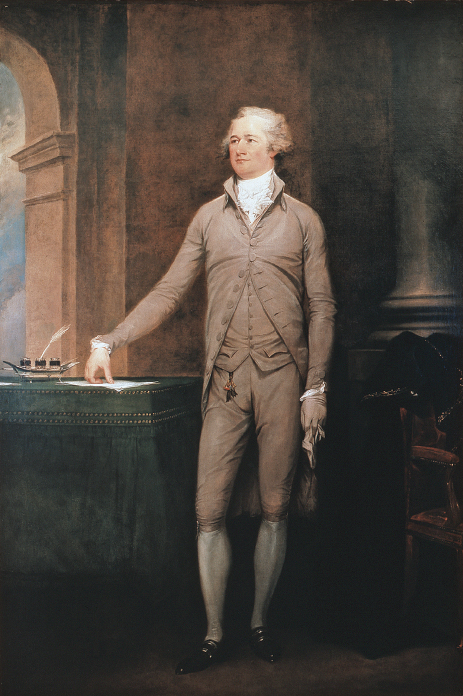What were Hamilton’s economic policies?
Printed Page 240

Figure false: Alexander Hamilton, by John Trumbull
Figure false: Hamilton was confident, handsome, audacious, brilliant, and very hardworking. Ever slender, in marked contrast to the more corpulent leaders of his day, he posed for this portrait in 1792, at the age of thirty-seven and at the height of his power. CSFB Collection of Americana, NYC.
COMPARED WITH THE severe financial instability of the 1780s, the 1790s brimmed with opportunity, as seen in improved trade, in transportation, and in banking. In 1790, the federal government moved from New York City to Philadelphia, a more central location with a substantial mercantile class. There, Alexander Hamilton, secretary of the treasury, embarked on multiple plans to solidify the government’s economic base. But controversy ensued. His ambitious plans to fund the national debt, set up a national bank, promote manufacturing through trade laws, and raise revenue through a tax on whiskey mobilized severe opposition.
CHRONOLOGY
1790
- –Congress approves Hamilton’s debt plan.
- –National capital is moved to Philadelphia.
1791
- –Bank of the United States is chartered.
- –Congress passes whiskey tax.
- –Hamilton issues Report on Manufactures.
1793
- –Eli Whitney invents cotton gin.
1794
- –Whiskey Rebellion.